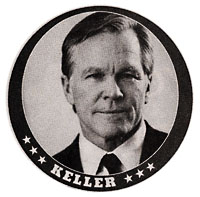
The Column of Lasting Insignificance: February 28, 2009
Dissing the New York Times
Jennifer Steinhauer is the prolific, “sassy,” and somewhat self-important Los Angeles Bureau chief of the New York Times but I knew little about her when I began to serialize my autobiography on my website 16 months ago. My book, Manhattan Memories, was mostly an informal history of New York in the 1950s to ‘80s and I thought mention of it would be a logical item for the so-called ‘paper of record’.
My book, after all, presented an eye-witness report of those seminal years when the Village Voice and three Manhattan ‘underground’ papers were born; the background to and participants in the anti-Vietnam war campaign; the inception and subsequent growth of the recreational drug movement; the beginnings of the very “New Journalism” that affected and improved even the Times itself. (It was a pretty stuffy, impersonal institution when I worked there.)
Several chapters were devoted to the vigorous Soho art scene including two to the enigmatic artist Andy Warhol, about whom I wrote the first biography.
So you would think that this memoir, appearing every two weeks for a full year, would be of some interest to the Times, right? Wrong. The paper repeatedly turned down my pleas for a mention and to this day has not condescended to devote a single sentence to its existence.
My tale begins with a letter to Ms. Steinhauer, described by one media blogger as “a superstar” who had been appointed to head the local Times bureau. Although this superior being did not condescend to reply to me, Ms. Steinhauer apparently passed on the letter to Rebecca Cathcart, a former NYU journalism student who had worked for Manhattan’s The Villager before coming out west.
After Ms. Cathcart stood me up for an appointment, I made the mistake of sending her a reproving e-mail (for which I later apologized) and thus saw neither hide nor hair of her in the year that followed. So, of course, no paragraph about MANHATTAN MEMORIES has ever appeared.
My expectation of some recognition from the paper was based upon several factors:
(i) the Times lavished 3,500 words on my life in April 1973; (ii) since which time I have produced more than 30 books, 1,000 columns and 800 cable TV shows about a score of countries; (iii) I had worked on the Times travel desk for three years before leaving to write $5-a-Day books; and (iv) the Times solicited comments from me on the death of Walter Bowart with whom I started New York’s first underground paper, the East Village Other, before and after which I co-founded the Village Voice and Andy Warhol’s Interview.
I realize that John Wilcock is of minimal importance in the general scheme of things, but I wasn’t seeking a profile — just a par saying where my book could be found, for the benefit of the many New Yorkers who went through those halcyon years with me and might have been interested in my report.
Manhattan Memories was my 38th book, most of the others being travel guides devoted to India, Japan, Mexico, Greece, Yugoslavia, Italy, South America, Venezuela, Europe, and the U.S.
So I pondered long and hard on why, what used to be New York’s ‘newspaper of record’, would have so little interest in a reporter’s documentation of Manhattan, during what in retrospect were its golden years, a time when it was cheap and easy to live there, and when the ferment was of a cultural, not financial nature.
But when I realized how much the much-diminished (and eventually to be extinct) paper had changed, how “contemporary” it had become, and how much more space was available for reviews of the arts, and the veneration of relatively unknown musicians and novelists, rather than the actual stories of innovators, people with ideas (I had served through a Revolution), manifest realities. I found it hard to understand a paper that can devote a couple of pages to a teenage singer but can’t spare a paragraph to mention a lifetime career such as mine. Then it began to make sense.
Sixties history, the major influence on a generation, is not something you might guess the Times of today is much interested in. To me, those were Manhattan’s golden days, a time of seminal, exciting change. But what if you hadn’t experienced the change? I guess you had to have been there to understand that story. But the early years of Times editor Bill Keller’s career had been in Portland, Oregon, and then Dallas, Texas, before he joined the paper’s Washington bureau in 1984.
 |
|
Bill Keller
|
It was never likely that Keller would have had the slightest interest in me or given a rat’s ass about my life in the Big Apple. His New York life began in the mid-80s, by which time I was long gone.
All the passion of the Sixties with its furious competition between half a dozen rambunctious daily papers, the early years of the Village Voice, the battles against such titans as Carmine DeSapio and Robert Moses, the birth of underground media and the colonization of the Lower East Side, the cultural excitement of the Soho art scene — these would all be things he might have read or heard about, but of which he had no personal experience. Why would he have the slightest interest in a low-level reporter who had lived through all these things and documented them? (Even if said reporter was himself a former Times man).
Pissed off as I was at being dissed, I decided that instead of posting the column I would send a copy of it to Ms. Steinhauer whose response was immediate. As “basically everyone’s name” was wrong, she said, it was impossible to trust anything I wrote. I pondered this: whose names could she mean? Obviously not her own or mine, or Warhol, Cathcart, Bowart, Keller, or Barker. That left two names (out of 10). When somebody makes an over-the-top (mis)judgment like that, how can you trust anything she writes?
It’s clear that old media will never acknowledge me: in fact, it’s a reluctance to give any credit to an author on the Internet that may account for the Times’ inexplicable silence. Thus, if recognition for me ever comes, it will have to be from the Internet itself. Meanwhile this column (since 1955) heads into its 54th year.
